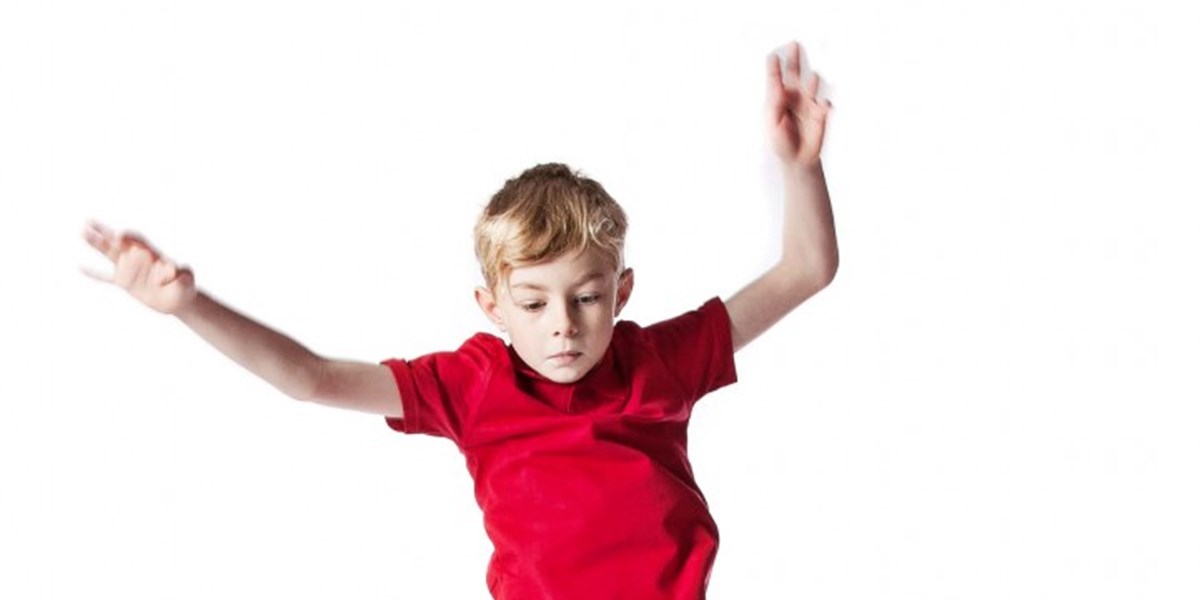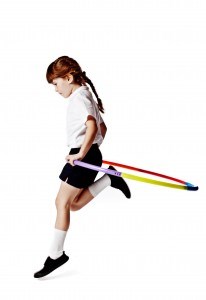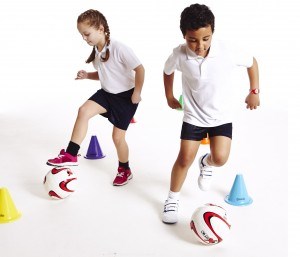Key Stage 1 - Agility Games and Activities

Agility helps performance in activities that require children to change direction quickly whilst keeping balance, strength, speed and body control. It is not just about the speed with which a child can change direction, but also by the grace and fluidity of movement. Improving agility will prepare children for competitive team games which involve various different movements and changes in direction such as football, basketball, gymnastics and tennis.
Here are some great ways to improve agility…
Set cones out in a straight line which children have to walk or run in and out of. This will develop the basic movement of changing direction.
-Make it hard: move in and out of the cones then jump over the cones on the way back.
-Make it harder: move in and out of the cones whilst balancing a rubber quoit on their head.
-Make it easier: Place the cones further apart to make the direction change easier.
-Games; using a stopwatch, time the children’s individual efforts and encourage development.
What will you need? Cones, rubber quoit, stopwatch.
Play individually to time each child’s effort and then improve it.
Set a variety of coloured hoola hoops out in groups on the floor (in jumping distance from eachother). Children then jump to the colour shouted by the teacher. This will require children to move in random directions.
-Make it hard: space hoola hoops further apart
-Make it harder: make a random pattern of hoola hoops with different colours and shout colours to which the children have to jump to – this will improve speed and agility by reacting to commands quickly.
-Make it easier: place hoola hoops in a straight line making it easier for children to jump in.
-Games; using a stopwatch, measure the time it takes a child to complete the course. If they jump in the wrong hoola hoop or don’t complete the jump successfully, the children have to start again. Create teams using bibs.
What will you need? Hoola hoops, stopwatch, bibs.
Play individually to begin and then introduce relay races, splitting the class into groups.

Using a range of coloured plastic cones set out in zones, children must run to the colour that the teacher shouts. This familiarises children with colours and directions.
-Make it hard: shout colours quicker to speed reaction times of the children and encourage them to change direction quicker.
-Make it harder: instead of running between cones, children must hop, skip or jump.
-Make it easier: place cones in a straight line making it easier for children to move through.
-Games; using cones to set a course, shout commands until children have become comfortable with the challenge. Increase the challenge to continue progression and development.
What will you need? stopwatch, plastic cones, bibs, whistle.
Play individually to begin and then introduce relay races, splitting the class into groups.
Dribbling a ball through a pattern of cones using feet to steer the ball in and out. This requires balance, coordination and agility in order to keep the ball whilst moving and changing directions.
-Make it hard: set cones in irregular patterns.
-Make it harder: dribble balls through cones then shoot through a target hoola hoop at the end.
-Make it easier: begin by outlining a square and getting children to walk or run whilst keeping the ball at their feet. This will get children comfortable with coordinating a ball at their feet.
-Games; using a stopwatch, measure the time it takes a child to complete the course.
What will you need? Balls, hoola hoops, cones, stopwatch, whistle.
Play individually or set up team relay races, encouraging group participation and team work.

Using a parachute, each child in the class is given a different colour. When their colour is called by the teacher, they have to run across to the opposite side as the class lift the parachute up.
-Make it hard: when a colour is shouted, children with the same colour have to swap places whilst under the parachute.
-Make it harder: replace colour commands with numbers and ask maths question which equal to their numbers.
-Make it easier: children run around the outside to their colour.
-Games; the aim of the class holding the parachute is to trap the children who run underneath. They therefore have to pull the parachute down as quickly as they can. Those who escape win a point. Those with the most points win.
What will you need? Parachutes, cones, stopwatch, bibs, whistles.
Involve the whole class to hold the parachutes, creating smaller groups by allocating colours or numbers.
By working on agility, children will learn to use their muscles in order to adjust to changes in movement. Agility will develop a child’s nimbleness, speed and build body confidence. This will set them up for success in playing games and sports with their peers.
As always, ensuring children are safe during these activities is very important. It is important to use the appropriate matting and safety procedures when carrying out the above activities.
Once children have played all of the above balance games, take a look at our KS2 agility blog or our Coordination and Balance challenges to continue development.
The possibilities are endless! Get creative and make these activities easier or harder depending on progression – and if you have an idea about any great games, please let us know. Measure and encourage development through the use of team games, personal bests and races, measuring times and distances with a stopwatch and whiteboard.





